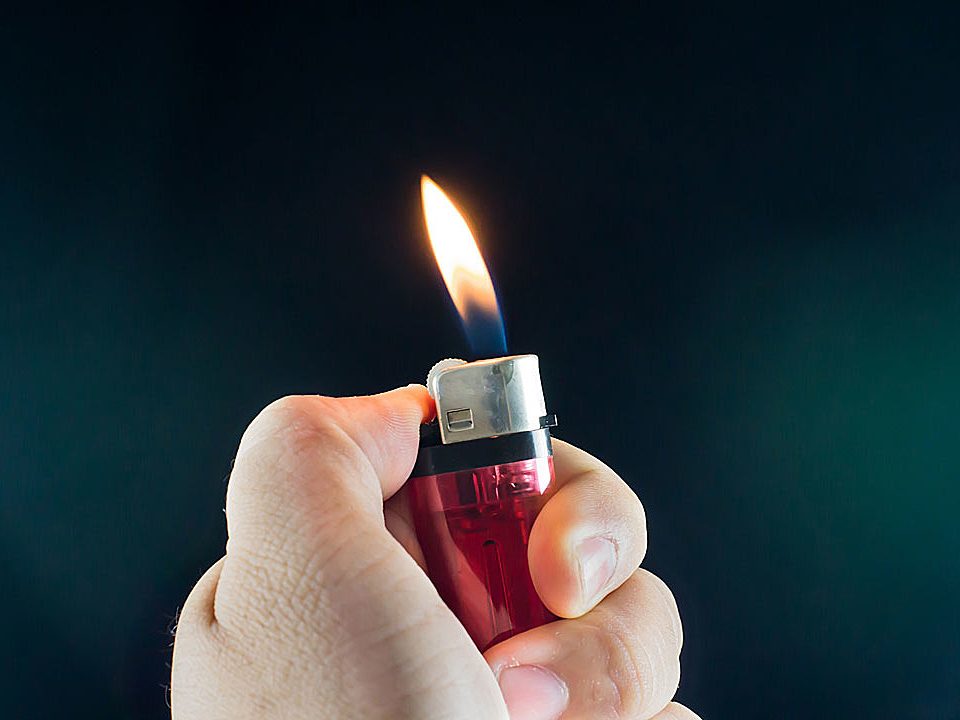Do You Ever Experience Fear?
Do You Ever Experience Fear?
 The first auto accident injury case that I tried in front of a jury was in 1985, two years after I opened my law practice. Prior to the beginning of jury selection, the insurance defense attorney and I sat down in the judge’s office to discuss the case. When the judge asked us if there was any way we could settle the case, the defense attorney explained that we had attempted to negotiate a settlement, but we were still $3,000 apart.
The first auto accident injury case that I tried in front of a jury was in 1985, two years after I opened my law practice. Prior to the beginning of jury selection, the insurance defense attorney and I sat down in the judge’s office to discuss the case. When the judge asked us if there was any way we could settle the case, the defense attorney explained that we had attempted to negotiate a settlement, but we were still $3,000 apart.
In our most recent round of negotiations, I had reduced my demand for settlement to $15,000 and the defense attorney had increased his offer to $12,000. The judge asked about the facts of the case and, after being told that my client had less than $5,000 in medical and chiropractic bills, asked if there was any way we could meet in the middle and get the case settled for $13,500.
The defense attorney responded that if my client was willing to agree to settle the case for that amount, he could get the insurance company to increase its offer. He then warned me and the judge that $13,500 was the most he was going to be able to get.
The judge looked at me and suggested that I go out into the hallway and talk to my client about getting the case settled for $13,500. I left the judge’s office and talked to my client, who was still having some pain and stiffness in her neck and back as a result of her injuries. She didn’t want to compromise any further than she already had.
I stepped back into the judge’s office and told him and the defense attorney that my client wasn’t willing to accept an offer of less than $15,000. The judge told me that he thought my client was making a mistake. He said that in each of the last six injury cases that were tried in his courtroom, the juries had awarded the plaintiff (the injured person who filed the lawsuit) less than the amount that was offered prior to trial.
I asked the judge who the plaintiffs’ lawyers were in the cases he was referring to, and when he told me their names, my immediate thoughts were, Those guys aren’t any good at presenting a case to a jury. I could do better than them any day of the week.
The judge then recommended that I try to persuade my client to accept $13,500. I told him that I would talk to her again but that I wasn’t willing to use my advocacy skills to change her mind, because I agreed with her that $13,500 was not enough money to compensate her for her injuries. The judge got irritated with me. He said that my client and I were taking too much of a risk by going to trial and that I needed to recognize that risk and attempt to persuade her to settle the case.
To be fair to the judge, I think he knew how inexperienced I was, and he was trying to help everyone out by attempting to get the case settled.
I stepped out of the judge’s office again and talked to my client. Since I felt the same way she did, I didn’t attempt to talk her into changing her mind. We ended up going to trial on the case.
The trial lasted two and a half days. The defense attorney had over 30 years of experience, and it showed during the trial. He repeatedly objected to my questions, and the majority of the time the judge ruled in his favor. In order to present certain testimony and evidence in a case, an attorney must first ask various questions that “lay the foundation” for the evidence. Several of the defense attorney’s objections had to do with me not properly laying the foundation for evidence that I wanted to present to the jury.
There was a point during the second day of the trial when I asked one of the witnesses a question to which the defense attorney objected. The judge sustained the objection, which meant that the question was improper and I needed to either rephrase it in the proper way or move on to another question. When I rephrased the question, the attorney objected again and the judge sustained the objection. Then, without thinking, I asked the same question that I had originally asked. The defense attorney jumped up and yelled, “Objection!”
The judge then reactively jumped up and yelled, “Harry, I sustained that objection twice, and you asked the same question again! When I sustain an objection, you are not allowed to ask the same question again.”
As soon as the final word came out of his mouth, the judge realized what he had done. He stopped yelling and looked at me, then the defense attorney, and then the jury. There was stunned silence in the courtroom. (A judge is supposed to remain impassive and impartial; he’s not supposed to yell at an attorney in front of a jury. In addition, it is customary for a judge to only refer to attorneys as Mr. or Ms., rather than call them by their first names.)
The judge slowly sat back down in his chair. At that time, I was standing near a podium facing the judge. Everyone in the courtroom was looking at me. All I could think of was, What do I do now? What should I say? I don’t know what to do. C’mon, Harry, think of something to say!
I looked at the judge and said simply, “I’m sorry, Judge.” I turned around and took a few steps toward the gallery (the area of the courtroom where observers sit) and then turned around and looked at the judge again and said, “I’m sorry, Judge.” My mind was paralyzed. I couldn’t think of anything else to say. I turned and took a few more steps. Still paralyzed, I turned around a third time and faced the judge: “I’m really sorry, Judge.”
He looked at me and responded, “That’s okay. Don’t worry about it. Just move on to the next question.”
I still didn’t know what to say, so I silently called out to the Mother of God, Hail Mary, please help me. Immediately after my short prayer, without thinking, I asked a question. And I was able to finish the questioning of the witness without another objection.
The jury awarded my client $39,000. As they were walking out of the jury box, I shook each of their hands and thanked them for ruling in favor of my client. The last juror was a young woman in her early 20s. When I thanked her, she said, “Someday you’re really going to be a good lawyer.”
I think the jurors felt sorry for me. It was obvious to them that I wasn’t ready for the big leagues, but they saw how much I cared about my client. I think they appreciated my authenticity. They knew I put my whole heart and soul into the case.
At the time of that trial, I was 28 years old. I was like a fearless teenager who takes risks he shouldn’t take and jumps into situations he shouldn’t be involved in. Even though I had watched several very good lawyers try cases in front of juries, I really didn’t realize what I was getting myself into. It looked easy — just like skydiving looks easy.
Because of my youthfulness and lack of experience, I didn’t have any fear going into that courtroom.
The dictionary defines fear as “an unpleasant often strong emotion caused by anticipation or awareness of danger.” Some synonyms for “fear” include dread, fright, alarm, panic, terror, and trepidation.
I didn’t have any fear because I wasn’t aware of the danger that lay ahead of me.
I hate to admit this, but today at the age of 56 (twice as old as I was when I tried that case) I have to wrestle with and beat back fear several times a year, in both my personal and my professional life. Why? Because now I know exactly what I’m getting into. It’s almost as though I know too much. That unpleasant and strong emotion of fear rears its ugly head because of my anticipation and awareness of the dangers that lie ahead of me.
Do you ever feel that way — fearful of what lies ahead for you? We’ll talk more about fear next week.




1 Comment
Dear Harry and Georgette,
I appreciate your story – it brought back to me an incident in my life – AT AGE 28 – when I wasn’t trained yet to counsel anyone. When visiting a “Child Care Home”, A young girl asked me if I had time to talk with her. I said, “Maybe tomorrow”. I was too scared to respond as I should have done!! The next day, I was told that the girl had left to go back to her family situation – a miserable one – and I was the only person she had ever approached for help. I prayed, knowing that God would take care of her! I still think regretfully about it, and pray for her!! Sister Roberta